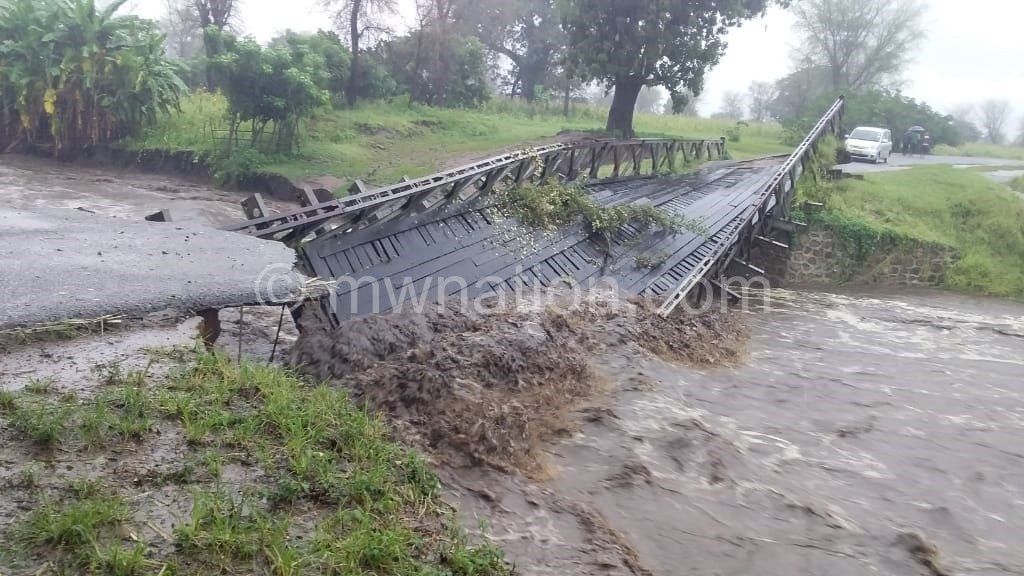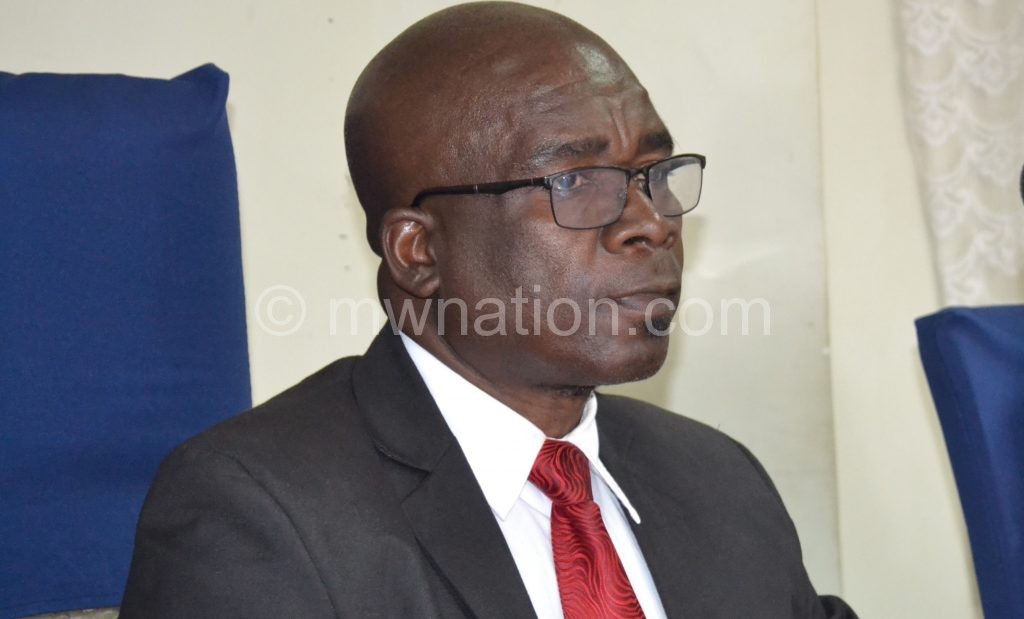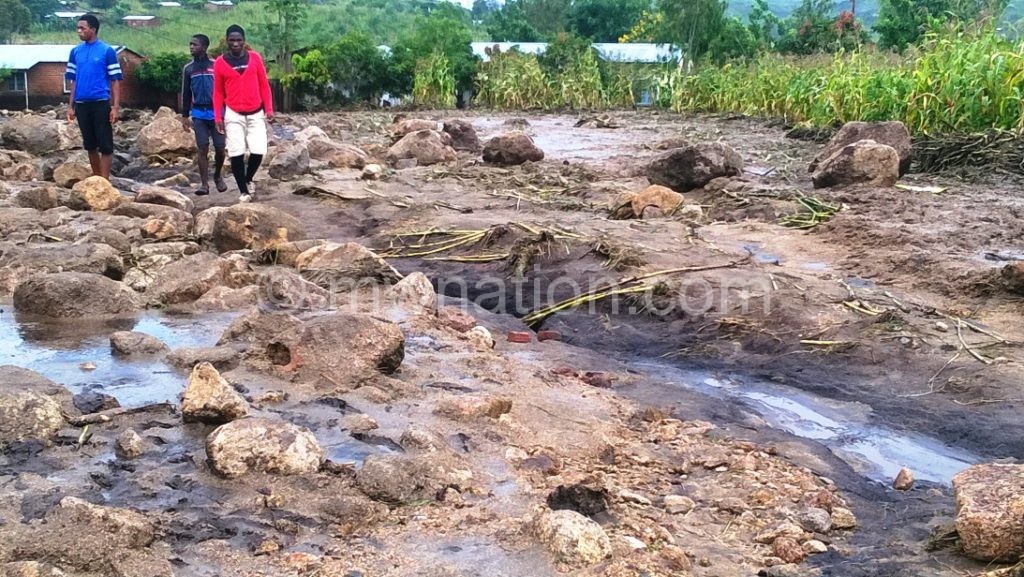Floods kill 26
- Egenco forced to shut down power plants
- APM declares state of national disaster
Lives of people and livestock have been lost. Thousands are left homeless with hundreds injured. Some are missing. Numerous property including houses and domestic utensils, crop fields and infrastructure such as roads and bridges have extensively been damaged. Some will never be repaired.
This is the level of damage the country has experienced during the past three days since intense rainfall accompanied by strong windstorms started falling-primarily over the Southern regions-where movement in most areas has also been restricted.

The damage which has made President Peter Mutharika to declare a state of national disaster, according to presidential press secretary Mgeme Kalirani, has not spared the energy sector as on Friday the Electricity Generation Company (Egenco) was forced to shut its Nkula and Kapichira Power Stations making Egenco lose 270 megawatts (MW) of hydro generation capacity against the available capacity of 320MW.
As of last evening, at least 26 people were reported to have lost their lives in the Southern Region since Thursday. While some died after their houses’ walls collapsed on them others were swept away by running waters (floods).
The figure brings to over 40 people that have died so far due to natural disasters after the Department of Disaster Management Affairs (Dodma) in the Ministry of Homeland Security revealed in December last year that 15 people died since the onset of rains in November 2018.

The perennial flooding Chikwawa District has recorded the highest number of deaths which, as we went to press, stood at seven, according to district commissioner (DC) Lusizi Nhlane.
Other deaths have been registered in Thyolo (five), Balaka (three) while Zomba, Machinga, Mulanje and Blantyre have recorded two deaths each. Phalombe, Neno, Nsanje and Chiradzulu recorded a single loss each.
Several district officials such as DCs and other leaders Weekend Nation spoke to on Friday painted a depressing picture of the situation as hundreds of the victims sought temporary shelters in churches and schools, among others.

In Chikwawa, Nhlane said that out of the seven dead, five were killed in the area of group village headman (GVH) Jana in Traditional Authority (T/A) Makhuwira while one was from Chagambatuka Village in the same T/A and the other was from Sekeni GVH under Paramount Chief Lundu.
The DC said about 8 755 people representing 2 522 households had been affected at the time of interview and were seeking shelter in 17 camps comprising churches, schools, community based organisations (CBOs), grounds and other evacuation centres.
Movement between Blantyre and Chikwawa and its surrounding areas came to a halt after big rocks from the mountains blocked the M1 which was also flooded.
Thyolo Police Station spokesperson Amos Tione said out of the five deaths recorded two were from Chipho Village in T/A Nsabwe while three came from Gomani Village T/A Changata. They all died after walls of their houses fell on them while asleep on the night of Wednesday.
On his part, Nen@o DC Rhodrick Mateauma said the district had recorded one death from Chinyanje Village in T/A Dambe after 677 houses collapsed.
In Mulanje, the rains have nearly flooded all rivers and affected almost 2 000 households. The development resulted in death of a woman after a vehicle she was travelling in submerged in water, according to DC Charles Makanga.
“Figures are changing every hour because more houses are falling down. The most affected area is Mulanje North where the district is bordering Phalombe where hundreds of people have been displaced,” he said.
While Weekend Nation findings indicate most of those affected were yet to be reached due to the difficult terrain, the department said it had deployed search and rescue teams in collaboration with the Malawi Defence Force (MDF), Malawi Police Service (MPS), Malawi Red Cross Society and officials from the affected districts.
“The department has also deployed 23 trucks of relief items to be distributed in the affected districts. The relief items include tents, plastic sheets, maize, rice, beans, blankets and kitchen utensils,” reads a statement from the department issued on Friday.
This year, government set aside K68.5 billion for disaster response as the El Nino phenomenon-a dominant weather occurrence in the southern part of Africa this year-takes toll on Malawi.
Hydro power closure preventive measure
Egenco senior public relations officer Moses Gwaza said in a statement, the closure of its major hydro power stations was a preventive measure against damage to the equipment due to flooding and excessive debris at the power stations.
“Currently, works to clear the debris are underway at the respective power stations so that once the water level situation has improved generation should resume,” he said.
But in an interview with Weekend Nation, Gwaza said the situation was temporary as they were hoping to start running all the machines by today.
On his part, Electricity Supply Commission of Malawi (Escom) public relations manager Innocent Chitosi said during the period they prioritised supply of power to essential services like hospitals.
Earlier in the day, the Department of Climate Change and Meteorological Services said the heavy rains were as a result of deep low pressure area which initially developed in the Mozambican Channel and had intensified due to the presence of the Inter-Tropical Convergence Zone oscillating over Southern Malawi.n





